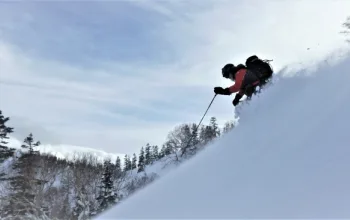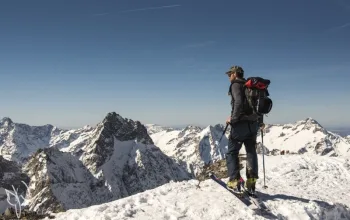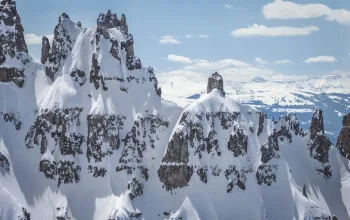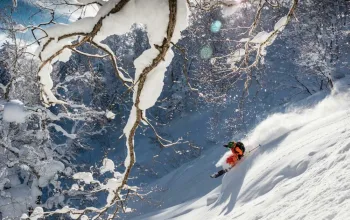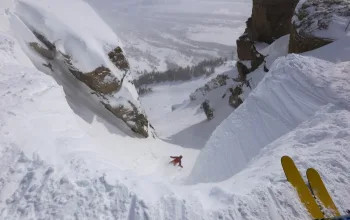In fact Sascha kicked off his first year on the tour with a superb second place in Courmayeur in January.
He’s a cheerful but determined character who clearly loves taking on the kind of terrain that would terrify most of us, and we caught up with him for a chat earlier this season at the Chamonix leg of the tour.
Snow: So Sascha, what’s your snowboarding background?
SH: I moved to the UK from Austria when I was five and started boarding when I was 14 on trips to visit my aunt in Italy, but I didn’t really get into it properly until I was 17 on the dry slopes at Hillingdon; then when I was 19 I went to Avoriaz for a season instead of uni and ended up doing five winters in the Alps, during which time I learnt to board properly.Snow: And you then went on to compete?
SH: Yes I was the British Snowboard Half-Pipe and Overall Champion in 2000, but then I took time out to set up my own business in LondonSnow: And is it true that you commute to Chamonix throughout the winter and to the FWT as well?!
SH: Yep, I rent a place in Cham and fly out on Thursday evening and back to London on Monday morning! When I’m competing I do the same for each FWT event in the Alps - hopefully I’ll also be able to do it for the two North American legs of the FWT [at Kirkwood and Revelstoke].Snow: So you got back into competition through the Freeride World Qualifiers and gained a place on the FWT for this season at the ripe old age of 37…
SH: Yes, but I think being older is an advantage – most of the guys on the tour are in their thirties as you need experience to be a good freerider.Snow: But along with experience and great skill you also have to be pretty gutsy to take on the kind of terrain in which you compete; how do you go about planning your ride bearing in mind the fact that you’re not allowed any practice runs?
SH: You analyse the face you’ll be riding head on the day before the event and pick out certain markers that you want to get to on your way down; but it doesn’t always work out that you can do the ride you had in mind.Today for instance [the Chamonix leg] I’d worked out what I thought was a ‘winning line’ but once I was on the face I realised that it would have been a very gnarly descent with a 20-foot drop over a small cliff into a 150-foot chute, so I had to change it at the last minute.
Snow: And were you pleased with your performance [Sascha came eighth]?
SH: Yes I was although I think I may need to tailor my riding style to suit what the judges are looking for rather than just going for it! I think that would help me get better results.Snow: So here comes the inevitable question – what have been your worst injuries?
SH: A broken arm on a dry slope! And ACL on my right knee and meniscus on my left.I also had a lucky escape in an avalanche – I was riding on my own in Austria and got buried 1.5 metres down in a slide, but I had an air pocket and was able to reach my phone and call a friend, tell him where I was and get him to send the pisteurs out to rescue me!
I was really lucky having the air pocket as I was buried for two hours; it made the TV in Austria, my grandma in Vienna heard about it through watching the news!
But freeriding on the tour isn’t as dangerous as people think. I can ride as hard as I want knowing that the terrain has been checked for avalanche safety beforehand and there’s a helicopter on hand if I do get into trouble; it’s far safer than riding in the backcountry with friends.




